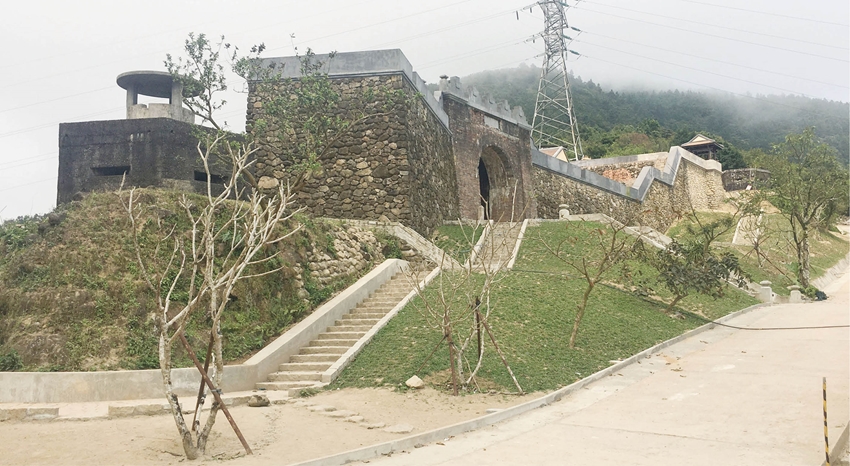 |
| Hai Van Quan relic after restoration. Photo: D. Thong |
1. Construction started in December 2021, after a period of restoration and rehabilitation, Hai Van Quan relic site began to open to visitors from August 1, 2024. The two localities, Thua Thien Hue province and Da Nang city, have cooperated in the form of 50-50 capital contribution from the budget for the project in accordance with current regulations, the project documents were approved in accordance with the procedures agreed upon by both parties. Built during the Tran Dynasty and restored in 1826 under King Minh Mang (Nguyen Dynasty), Hai Van Quan was known as "Thien ha de nhat hung quan". Under the Nguyen Dynasty, Hai Van Quan was an important pass, the gateway to Hue Capital from the south. This event is considered a symbolic handshake between Thua Thien Hue province and Da Nang city.
Almost at the same time, both localities brought another interesting surprise when they launched a specialized train running from Hue to Da Nang and vice versa with the name "Connecting Central Heritage" on March 26, 2024. With 2 trains departing in the morning and afternoon from Hue to Da Nang and vice versa, visitors can welcome the sunrise and sunset on Lang Co Bay, one of the most beautiful bays in the world on the journey. Putting into operation the Hue - Da Nang train not only contributes to ensuring traffic connections for people between Thua Thien Hue province and Da Nang city, but also provides an exploration experience for visitors when coming to these two ancient and modern tourist cities in the country.
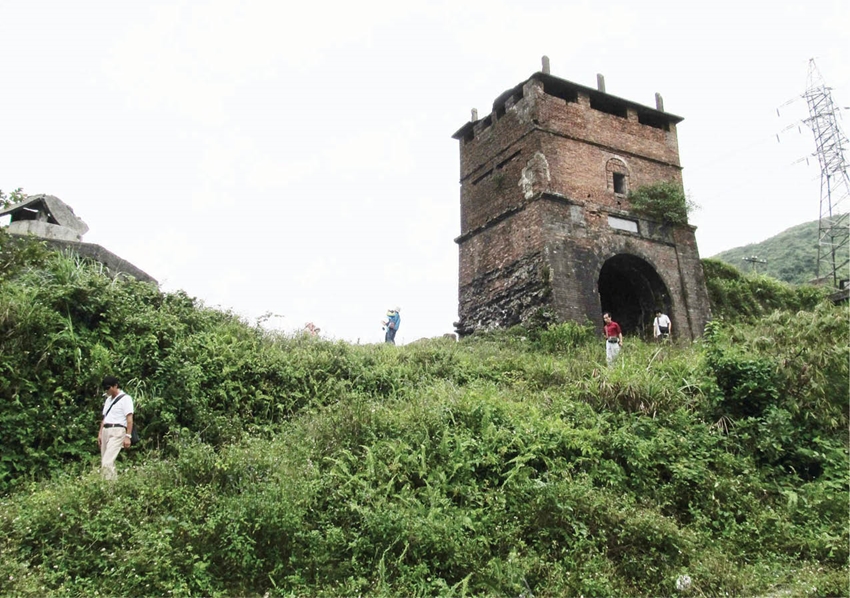 |
| Hai Van Quan is still abandoned. Photo: D. Thong |
2. These are two symbolic events. The connection between Thua Thien Hue and Da Nang in tourism has a long history of development. Along with Quang Nam, Thua Thien Hue and Da Nang are the two main highlights of the "Central Heritage Road" tour. This is a project initiated by Mr. Paul Stoll - a German tourism expert, built and launched by the Vietnam National Administration of Tourism, creating a widespread network, contributing to building a unique brand of Vietnamese tourism, compared to the "Historical Highway" tour of Japan, the "Wine Road" of France or the "Silk Road" of China.
The cooperation between Da Nang and Thua Thien Hue has gone beyond tourism. Notably, for the first time in February 2018, the Standing Committee of the Da Nang City Party Committee visited Hue to meet with their counterparts from Thua Thien Hue to further expand the space for cooperation between the two localities. Along with tourism is the re-evaluation of the effectiveness and continued promotion of cooperation in training high-quality human resources in the fields of industry, high-tech agriculture, medicine and information technology; exchange, share, and experience in developing information technology - communications infrastructure, building e-government, smart cities, software parks, etc. with the hope that success will become a model for cooperation in developing the key economic region of the Central - Central Highlands.
3. On May 4, 2024, the Prime Minister approved the Planning of the North Central and Central Coastal Region for the period 2021 - 2030, with a vision to 2050. The goal by 2030 is for this region to develop rapidly, dynamically, towards sustainability, strong in marine economy, striving for the average income per capita of the region to reach the upper average level. Previously, on November 3, 2022, the Politburo issued Resolution No. 26 - NQ/TW on "Socio-economic development and ensuring national defense and security in the North Central and Central Coastal Region to 2030, with a vision to 2045". Thua Thien Hue is being built to become a centrally-run city and Da Nang is being built to become a regional international financial center, which is one of the goals.
27 years after Da Nang became a centrally-governed city (January 1, 1997), on November 29, 2024, the XV National Assembly delegates continued to press the button to approve the project to build Hue city, including the entire Thua Thien Hue province, directly under the Central Government. This is considered a historic moment for 2 of the 6 centrally-governed cities in the country to continue the tradition, promote potential, seize opportunities, "shake hands" more tightly, to expand and enhance cooperative relations, create a common socio-economic space, contributing to the whole country's steady progress in integration and development.
Source: https://baothuathienhue.vn/chinh-tri-xa-hoi/hue-da-nang-bat-chat-tay-de-cung-phat-trien-148596.html


![[Photo] Prime Minister Pham Minh Chinh receives a bipartisan delegation of US House of Representatives](https://vphoto.vietnam.vn/thumb/1200x675/vietnam/resource/IMAGE/2025/5/28/468e61546b664d3f98dc75f6a3c2c880)
![[Photo] Vietnamese and Hungarian leaders attend the opening of the exhibition by photographer Bozoky Dezso](https://vphoto.vietnam.vn/thumb/1200x675/vietnam/resource/IMAGE/2025/5/28/b478be84f13042aebc74e077c4756e4b)
![[Photo] General Secretary To Lam works with the Central Policy and Strategy Committee](https://vphoto.vietnam.vn/thumb/1200x675/vietnam/resource/IMAGE/2025/5/28/7b31a656d8a148d4b7e7ca66463a6894)

![[Photo] 12th grade students say goodbye at the closing ceremony, preparing to embark on a new journey](https://vphoto.vietnam.vn/thumb/1200x675/vietnam/resource/IMAGE/2025/5/28/42ac3d300d214e7b8db4a03feeed3f6a)


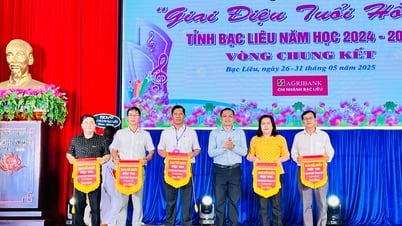
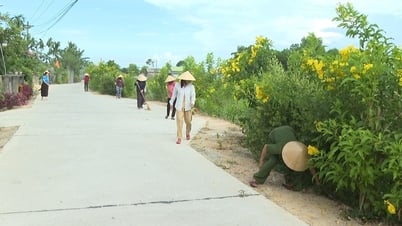








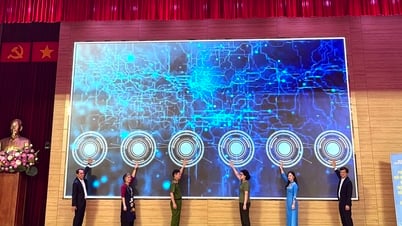



























































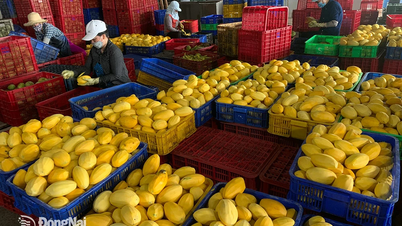

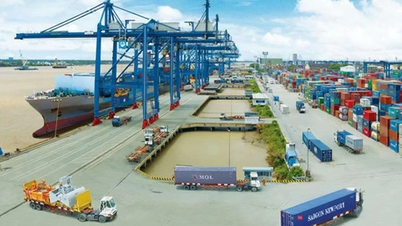








Comment (0)